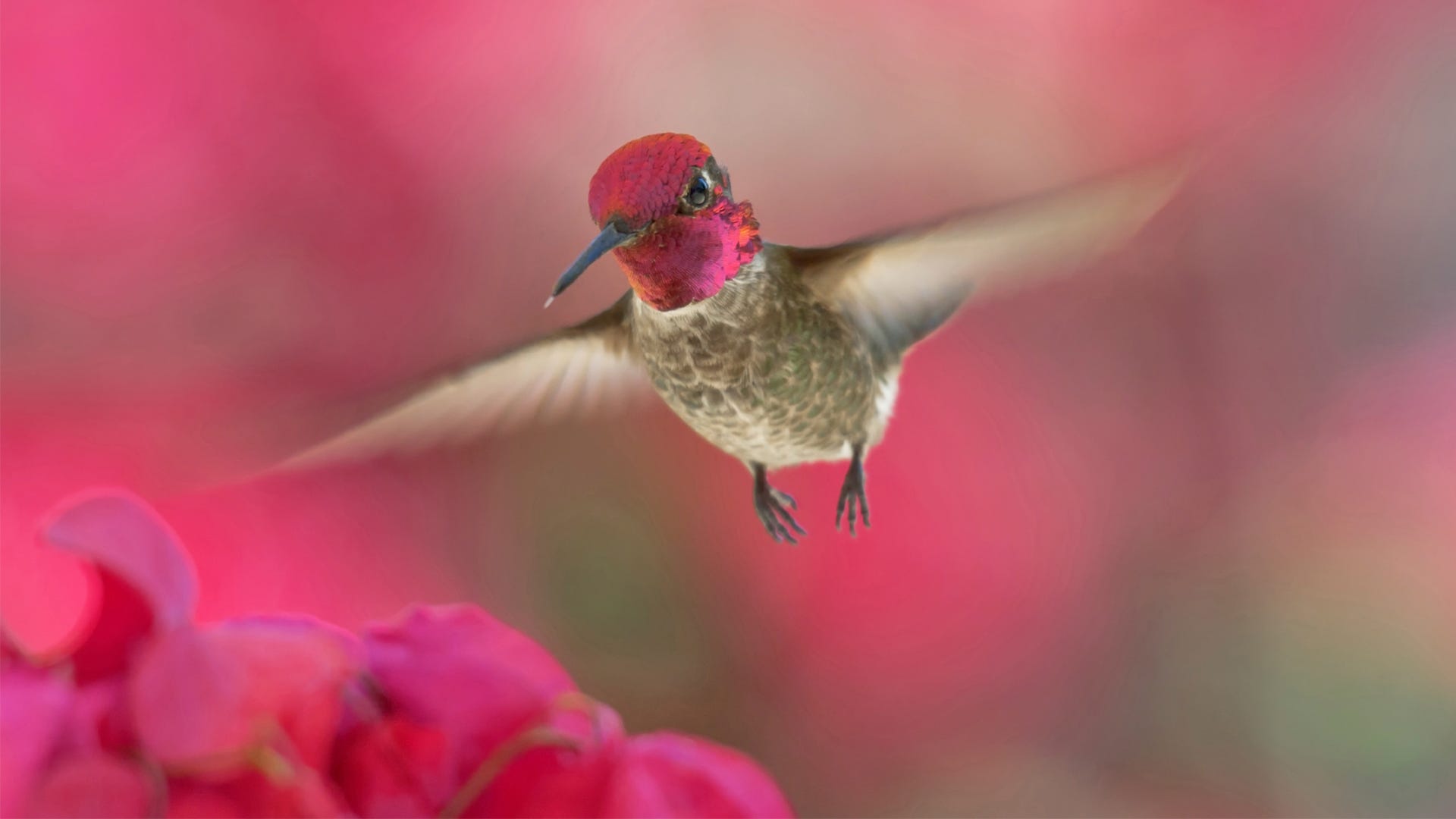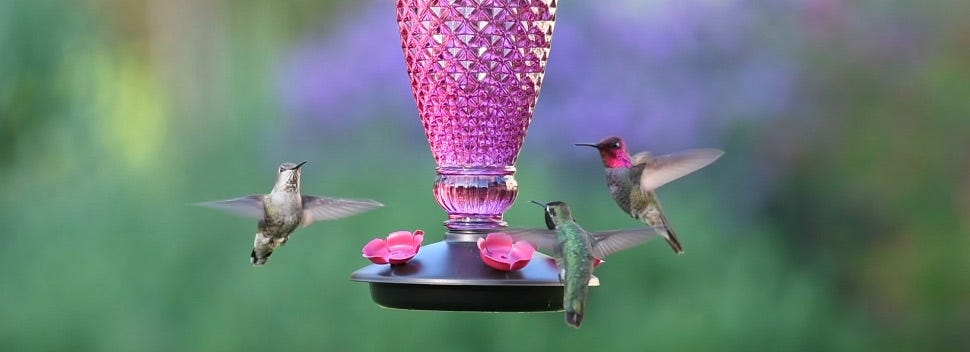
Like many backyard birders, you've probably spent the spring and summer amused by the sights of hummingbirds in your backyard. While their activity appears as carefree as summertime, these beautiful birds have been in preparation for migration. Very soon your hummingbird pals will be packing their bags, so to speak, and heading south for some well-earned vacation time.
Migration is exciting (especially for the birds), but we know you may have some questions, especially in the early stages of migration. Whether you want to know more about migration in general, or you want to know how to help your feathered friends on their journey, we’re here to assist. Let’s start by answering some of the most common hummingbird migration questions that we get asked.
1. When is hummingbird migration?
Most hummingbirds spend their winters vacationing in Central America or Mexico. In order to make it there in time, hummingbirds begin to travel during August and September. The migration is usually complete by the end of October. However, depending on the species, seasons, and air temperatures, actual migration patterns may vary.
2. How do hummingbirds know when to migrate?
Pure instinct plays a large role, but hummers also realize when it’s time to migrate based on their surroundings. The change in seasons is the main trigger. Hummingbirds notice things like the decline in daylight hours, or the decrease in the number of flowers, nectar, and insects (aka their food sources). When all those things start adding up, the hummingbirds know it’s time to head south!
3. I'm refilling my feeder a lot more often. Is this because of migration?
You bet it is! As the days grow shorter, chemical changes occur in the hummingbird’s body, creating an overwhelming need to eat. In order to maintain energy during their long trip, hummingbirds usually increase their body weight by 25-40%! To understand the enormity of this feeding frenzy, think of a 178 lb man gaining 70 lb. Not only is the amount of weight gained huge, but hummingbirds' ability to gain it at such a rapid pace is astonishing.
This need to store fat means not only will they be eating more than usual, but there will also be more hummingbirds stopping by to eat as well! To ensure that hummingbirds find feeders, keep yours well stocked to help your feathered friends put on more weight to prepare for their long journey ahead.
4. How long will migrating hummingbirds stay in my yard?
You could almost consider your feeder a resting station, like one you may stop at during a long journey in your car. These hummingbirds are literally making a pit stop to refuel so they can continue their way south for the winter months. The weather - and the amount of fat the hummingbird has already stored - will determine how long it will remain at your backyard feeder. It’s not uncommon for a migrating hummingbird to spend only a week replenishing its fat reserves, but it may also stick around for several weeks.

5. How do hummingbirds find my feeders?
Well, hummingbirds are creatures of habit. They typically follow the same migration pattern each year, and often breed and feed in the same yards. But there are a few things that you can do to help hummingbirds find feeders:
- Keep feeders full and clean
- Place feeders in open places with cover nearby
- Entice them with landscaping
When should I take my hummingbird feeders down?
When the day comes that your feeder is empty and the last of the hummingbirds have left, you might be thinking about removing the feeder. First, be sure that the hummingbirds have left for good. If you remove your feeder before the last of the hummingbirds have actually migrated, they will find another feeder and may not return to yours next year.
Instead, we recommend keeping your feeders filled and hanging until the first frost. When freezing becomes an issue, it’s a safe time to take down your hummingbird feeder. At the end of the season, empty any leftover nectar, clean the feeder, dry it thoroughly, and store it in a cool dry place until next year.
6. Why don't all of the hummingbirds leave at the same time?
You might be surprised to learn that there is order as hummingbirds depart your backyard feeder for migration. Adult males are the first to leave. Adult females typically leave after all the male hummingbirds have left. By leaving before both the females and immature birds, the males do not have to compete for whatever fading flowers are left or for other dwindling food sources. This gives immature birds enough time to gain weight before they begin their migration journey for the very first time. This staggered departure also ensures more resources along the migration trail.
7. I live in the south. Is there anything special I should do to help with migration?
As many more hummingbirds will be headed your way, your feeder’s nectar level will deplete faster than usual. Something those birders in the south can do to help is to put out more feeders around October. Your feeder may be the last stop for many hummingbirds before they show their passports and exit the country, so it’s helpful if you have more places for them to feed before they move on.
8. I’m really going to miss my hummingbirds. Is there anything I can do to prepare for their return in the spring?
We are going to miss the hummingbirds too! But of course there are things you can do to help prepare for their return. Start stocking up for next hummingbird season by flying on over and getting your hands on your favorite Perky-Pet® bird feeders. You can plant both early- and late-blooming flowers so there will be plenty of nectar for the hummingbirds when they return. Once you've taken these steps, next spring you will be ready to greet these jewel-like visitors as they descend upon your yard once again, knowing what an amazing trip they endured to get to you!







